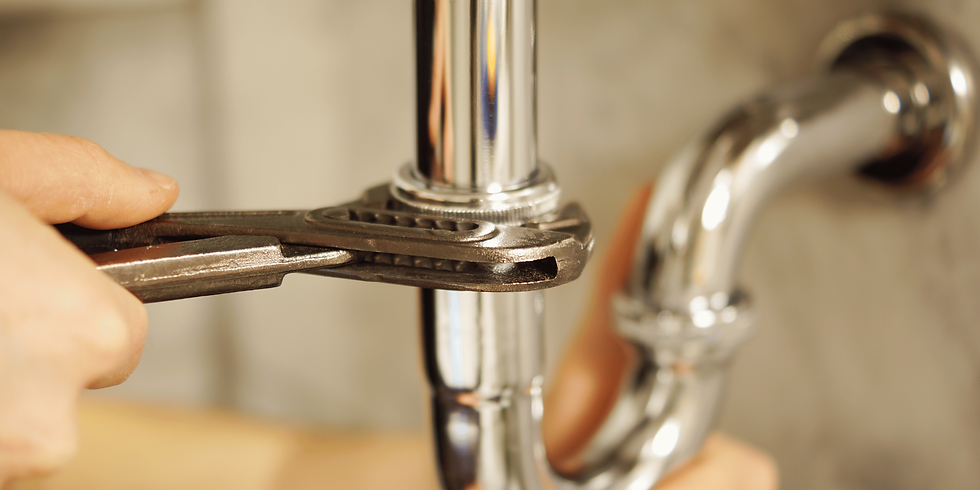When Did Indoor Plumbing Begin?
- Bill Yeager
- Sep 15
- 4 min read
Indoor plumbing is what most Americans take as a given nowadays. We open the tap and get clean water, flush a toilet without any difficulties, and have hot showers as a matter of course. But have you ever thought, when did indoor plumbing begin?
Indoor plumbing dates back thousands of years and spans several civilizations. In this paper, we will look at the history of modern indoor plumbing, its development, and achievements that led us to the convenience and comfort of modern indoor plumbing.
Ancient Beginnings: The First Signs of Plumbing
Plumbing in Ancient Civilizations
The idea of indoor plumbing dates back to the early civilizations of the world thousands of years ago:
· Mesopotamia (c. 4000 BCE): Clay pipes, used to carry water, have been found in the ancient cities of Mesopotamia. These primitive systems were mainly utilized in irrigation and waste disposal.
· Indus Valley (c. 2600 BCE): the cities of Harappa and Mohenjo-daro in present-day Pakistan had very advanced drainage systems. The houses were linked to the centralized drains with covered channels, which showed an early realization of proper sanitation.
· Ancient Egypt (c. 2500 BCE): Egyptians built bathrooms inside pyramids, and there were copper pipes to distribute water. They also possessed latrines that were equipped with running water that carried away waste.
The Minoans: The First True Toilets?
The Minoan civilization of the island of Crete (c. 2000 BCE) has been credited with some of the earliest flushing toilets. The Palace of Knossos had a flush system with rain water and stone bathtubs which were linked to drainage channels.
Roman Engineering: Plumbing on a Grand Scale
No history of plumbing is complete without the mention of the Romans who took things a notch higher.
Roman Aqueducts and Public Baths
In 312 BCE, the first aqueduct was constructed in Rome, the Aqua Appia. These aqueducts brought fresh water to cities, which was used in homes, public baths, fountains, and latrines.
Key Roman plumbing features included:
· Lead and bronze pipes
· Public toilets (latrines) with flowing water
· Underground sewage systems (Cloaca Maxima)
Nevertheless, even with these improvements, only the elite had indoor plumbing. The majority of Romans still relied on public facilities.
The Middle Ages: A Step Backward
Much of their plumbing knowledge was lost in Europe after the fall of the Roman Empire. During the Middle Ages (approximately 5th to 15th century), there was a degradation of sanitation practices.
Chamber Pots and Outhouses
During this period, people would utilize chamber pots (containers that could be carried) which were emptied in the streets or into cesspools. Castles and monasteries occasionally included what was known as garderobes, simple toilets into which the waste emptied into a moat or a pit.
They did not have indoor plumbing in the modern-day sense, and cities were very unsanitary which led to the spread of diseases like the Black Plague.
The Renaissance to 18th Century: Innovation Returns
With the entry of Europe into the Renaissance and, later, the Enlightenment period, knowledge about plumbing began to slowly re-enter.
Sir John Harington’s Invention (1596)
In 1596, Sir John Harington, godson to Queen Elizabeth I, designed the first modern flushing toilet. Although it did not take off immediately, it seeded the idea to be developed in future.
Cast Iron Pipes in France (17th Century)
Water was delivered using cast iron pipes in France in the 1600s. This brought about an improved water supply to the cities; however, indoor plumbing was still very rare and expensive.
19th Century: Plumbing Becomes Practical
The 1800s were the turning point in the history of plumbing, particularly in the United States.
Outhouses and wells were still used in American homes for the most part.

However, in the mid-to-late 19th century things began to change:
· 1840s: Running water began appearing in wealthy American homes.
· The 1850s and 1860s: Cities such as New York, Philadelphia, and Boston started to develop municipal water systems.
· Bathrooms with bathtubs and flushing toilets were more widespread in upper- and middle-level homes in the 1870s and the 1880s.
Sewer Systems and Sanitation Laws
Cities started to construct underground sewer systems to enhance the health of people. The U.S. enacted legislation that controlled plumbing practices, including use of venting, traps, and clean water supplies to avoid contamination.
20th Century: Modern Plumbing for All
Indoor plumbing became more prevalent in the U.S. in the 1900s with the help of industrialization, urbanization, and government spending.
Rural vs. Urban Divide
Although running water and flush toilets were available in urban centers by the beginning of the 20th century, rural America was lagging. It was not until the 1930s to 1950s, with the assistance of the New Deal infrastructure projects, that many rural homes acquired indoor plumbing.
Hot Water Heaters and Modern Fixtures
Inventions such as electric water heaters (developed in the late 19th century but becoming widespread in the 20th) and porcelain plumbing fixtures, as well as pressurized plumbing systems, made bathrooms more comfortable and sanitary.
By the 1950s, hot and cold running water, flushing toilets, and sewage connections were the norm in most American homes, as was a full bathroom.
Today--Smart Plumbing and Sustainability:
Indoor plumbing today is still in its evolution stage with smart home technology and a water conservation mindset.
· Low-flow toilets and faucets help reduce water waste.
· Tankless water heaters offer energy-efficient hot water on demand.
· Smart sensors detect leaks and control water usage remotely.
· Recycled greywater systems are being adopted in eco-conscious homes.
Contemporary plumbing is more than just comfort; it is also a component of the larger-scale attempts to conserve resources, improve health, and increase safety.




Comments